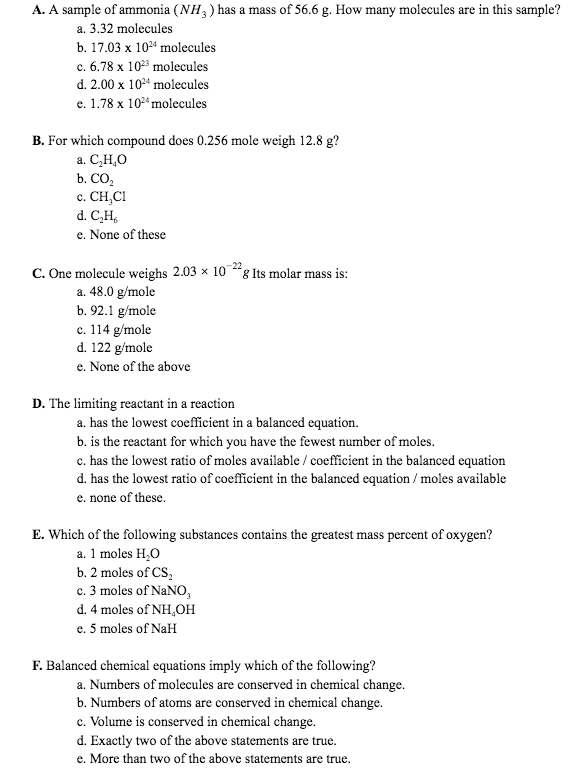CHEM 6B Lecture Notes - Lecture 1: Molar Mass, Empirical Formula, Royal Aircraft Factory F.E.2
54 views5 pages
6 Apr 2018
School
Department
Course
Professor
Document Summary
Fe(no3)3: mass % = (part / whole) x 100% = mass fe / mass molar, 1 fe, 3 n, 9 o (55. 485) / (55. 485 + 3*14. 0067 + 9*15. 9994) = 0. 2298 x 100% = C4h5n2o: phosphorous reacts with oxygen to produce a specific oxide. This oxide is formed in the lab when you react 1. 347g of phosphorous and 1. 744g of oxygen. What is the empirical formula: 0. 04348863 mol p, 0. 10900681, divide both by smaller number (0. 04348863, 1:2. 5 = 2:5, empirical formula: p2o5. 44518: 9. 37g h2o * (2*1. 00794/18. 01528) = 1. 048g h / 1. 00794. 0. 24250 mol c: 4. 40g h2o * (2*1. 00794/18. 01528) = 0. 4924g h / 1. 00794 = 0. 4885 mol h: 4. 40 - 2. 9126 - 0. 4924 = 0. 995g o / 15. 994 = 0. 06221mol. If 2. 72 moles of iron are reacted with excess oxygen, how many moles of iron (iii) oxide will be formed: 4fe + 3o2 -> 2fe2o3, dimensional analysis: 2. 72 mol fe 2 mol fe2o3 = 1. 36 moles.
Get access
Grade+20% off
$8 USD/m$10 USD/m
Billed $96 USD annually

Homework Help
Study Guides
Textbook Solutions
Class Notes
Textbook Notes
Booster Class
40 Verified Answers
Class+
$8 USD/m
Billed $96 USD annually

Homework Help
Study Guides
Textbook Solutions
Class Notes
Textbook Notes
Booster Class
30 Verified Answers
Related textbook solutions
Chemistry: Structure and Properties
2 Edition,
Tro
ISBN: 9780134293936
Basic Chemistry
5 Edition,
Timberlake
ISBN: 9780134138046
Principles of Chemistry Molecular Approach
4th Edition,
Tro
ISBN: 9780134112831
Principles of Chemistry Molecular Approach
3rd Edition, 2014
Tro
ISBN: 9780321971944
Chemistry: Structure and Properties
2nd Edition,
Tro
ISBN: 9780134293936
Chemistry: A Molecular Approach
3rd Edition,
Tro
ISBN: 9780321809247
Chemistry: A Molecular Approach
5th Edition,
Tro
ISBN: 9780134874371
Principles of Chemistry: A Molecular Approach
4th Edition,
Tro
ISBN: 9780134895741
Chemistry: The Central Science
14th Edition, 2017
Brown
ISBN: 9780134414232

